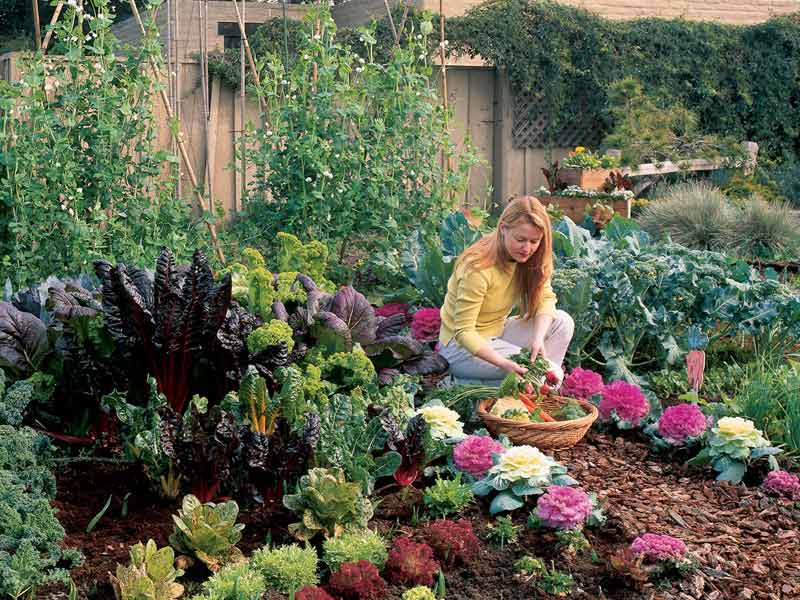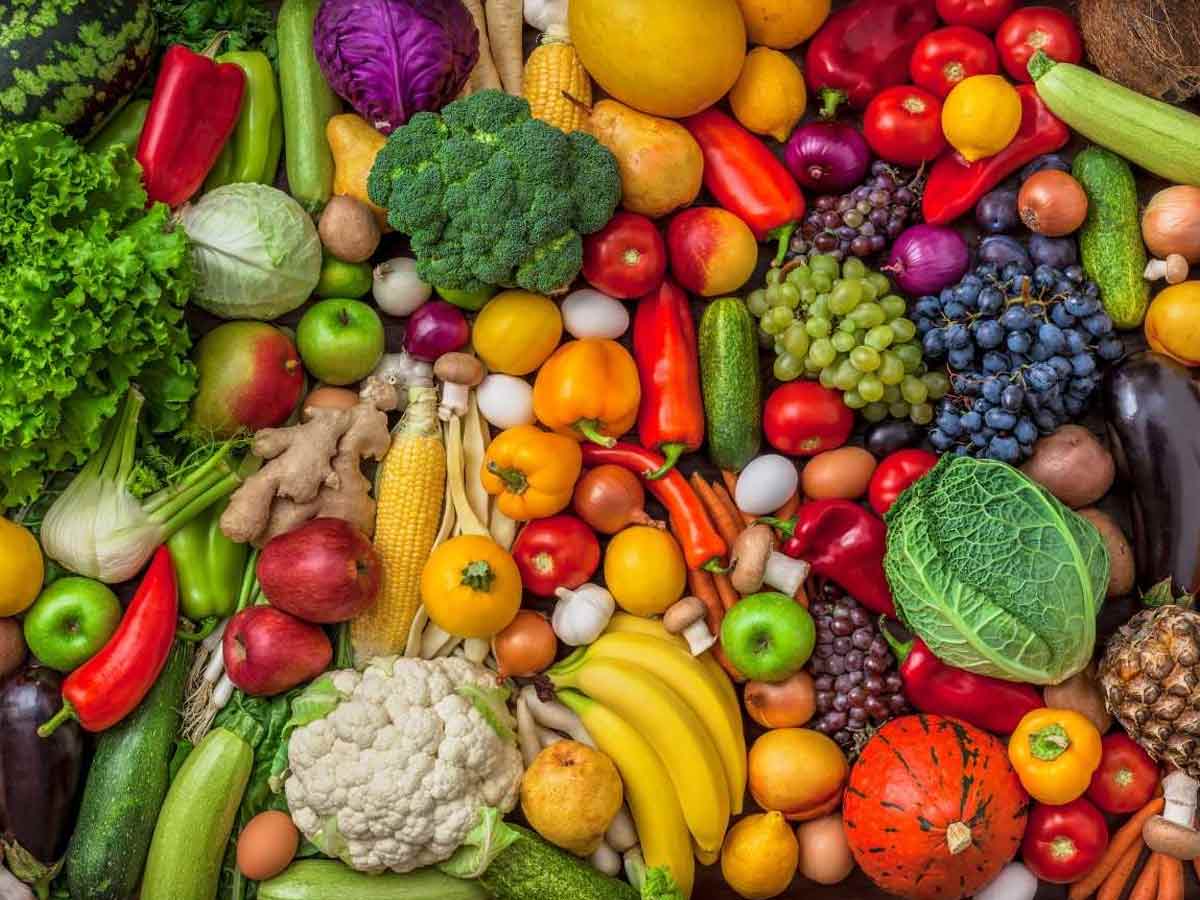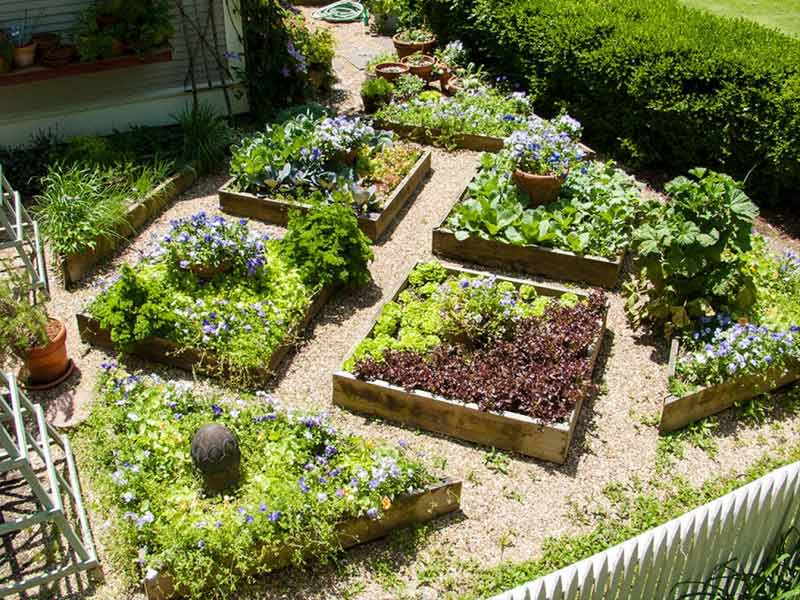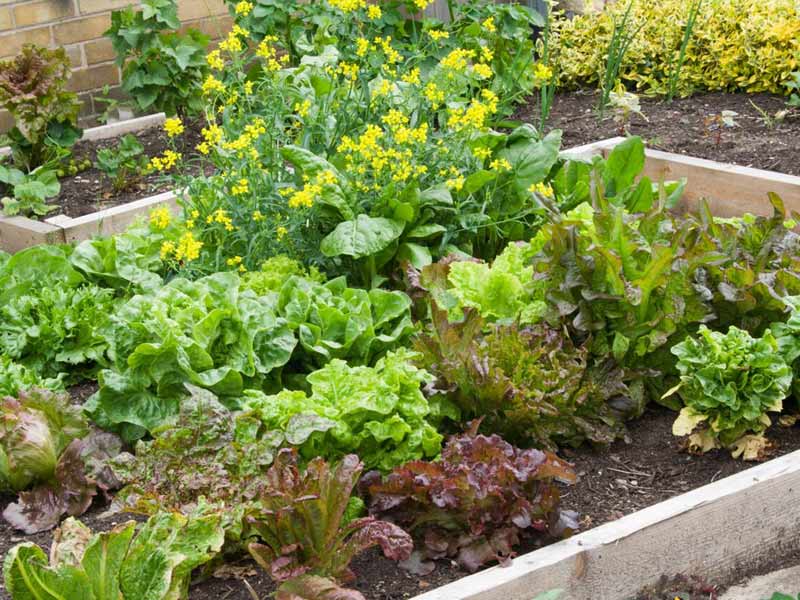A flourishing kitchen garden is a source of pride. A place to grow your own – whether you’re growing vegetables in raised beds, pots, from seed, or otherwise, there’s nothing like using the freshest ingredients for the kitchen table straight from your greenhouse.
Homegrown food and vegetables are not only tastier and healthier, but they can also reduce your grocery bill if your vegetable plot is flourishing. In reality, growing your own in a kitchen garden is becoming so popular that sales of vegetable seeds have surpassed those of flowers.
There are several methods for growing your vegetables. Plant them in cute containers, mix them in with the flower beds, grow them in a dedicated vegetable garden, or grow them in patio containers on a smaller scale. Continue reading to learn how to plan a kitchen garden to grow organic, homegrown crops and to get ideas for your kitchen garden design from some of the most beautiful UK kitchen gardens.
BEGIN YOUR KITCHEN GARDEN AT THE CORRECT TIME

Early spring is an excellent time to begin vegetable gardening, but you should start preparing ahead of time. Choose the size of the plot you like. Make sure you stick to a manageable scale. A large vegetable garden with enough space to grow anything would necessitate a significant amount of work, both in planning and maintenance. Suppose you don’t have much time to garden. In that case, a smaller plot with dwarf varieties, produce mixed in among flower beds, or planting in containers would be preferable.
DECIDE ON THE BEST LOCATION FOR YOUR KITCHEN GARDEN
It is entirely possible to grow a diverse range of fruits and vegetables in pots. Strawberries, both in flower and in fruit, make an especially appealing show.
The amount of space and light levels in your chosen growing spot will determine what you grow, and you must understand how much room you can give each plant to grow in a raised bed or pot before you begin. You should treat plants like royalty because if they feel crowded, you can’t be sure they’ll grow as well as they should! Check the seed packet to see how much space each vegetable or fruit plant would need. Then choose your pots and containers accordingly, as this will make your life a lot easier. To get the best results from your fruit and vegetable garden, you’ll need:
- An accessible, sunny location: Preferably one that receives morning sun and six to eight hours of direct sunlight every day. Vegetables need as much light as possible to develop quickly and well, so keep an eye on the sun during the day to see where shadows fall. If these conditions do not exist, some crops can tolerate shade, such as cherries, blackberries, raspberries, rhubarb, and blackcurrants.
- Security from the wind: Its impact can be filtered by a permeable barrier, such as a picket fence, hedge, or windbreak.
SELECT THE FRUIT AND VEGETABLES TO BE GROWN

Grow only what you want to eat and only as much as you like. Make a list of your favorite edibles, including spices, and consider those that are more costly to purchase. Include various vegetables that you like, then consider your room and growing conditions to narrow your range.
Keep things easy, particularly if you’re a beginner. The idea of growing your produce is thrilling, and believe us when we say that the desire to start ALL the seeds and plant ALL the vegetables available at your local garden center will be intense, but you must resist. Work with what you have, start small, and with time, you will be able to learn more about what you and your space should do to be effective every time. Further down, we’ve described the best vegetable garden plants for beginners.
Look for a crop succession during the seasons, with limited plantings every couple of weeks for a year-round harvest. It is worthwhile to seek out organically grown seeds and plants. Pesticides and chemical fertilizers are often used on conventionally grown plants.
DETERMINE HOW TO GET THE MOST OUT OF YOUR KITCHEN GARDEN.
Grow crops that are high in value but take up little room. Tomatoes need a lot of watering and feeding, but they grow vertically and produce much fruit. You can also grow different varieties than those found in supermarkets, ranging from tiny yellow cherry tomatoes to large black varieties, to save time, space, and money while having the best results.
- Look for higher yields as well as better taste and value when compared to store-bought produce.
- Exchange seeds with family and friends.
- Homegrown salad leaves are less expensive than bagged salad leaves from the supermarket – and less wasteful. Sow cut-and-come-again varieties every few weeks for a crop succession.
- Choose crops that are more costly to purchase than plant yourself, such as herb garden picks like mint, sage, thyme, parsley, and rosemary. These are simple to grow and can be harvested fresh for up to nine months of the year. Many herbs are perennial, meaning they can grow back year after year. Swiss chard is simple to grow, abundant almost all year, and not widely available in most supermarkets.
KNOW YOUR SOIL AND PREPARE IT FOR YOUR KITCHEN GARDEN

This kitchen garden grows courgettes, corn, onions, chard, and beans in rectangular beds with narrow access paths between them.
To get the best homegrown crops from your kitchen garden, make sure your soil is in good condition. It’s a good idea to measure the pH levels of the soil in your vegetable garden to help you choose crops that will thrive in it. Soil testing kits are inexpensive and widely available online.
RAISED BEDS MAY BE USED TO DEVELOP A KITCHEN GARDEN.
Raised beds filled with loamy soil purchased from a nearby garden center are suitable for growing small vegetable plots. They are an excellent choice if the soil in your garden is of poor quality. They improve drainage, raise soil temperature, and prevent soil compaction. The bed’s sides keep soil from washing away in heavy rain and serve as a shield against pests like snails and slugs, as well as pathway weeds. For your vegetable garden, you can buy ready-made raised beds or build them yourself.
DECIDE HOW TO DESIGN YOUR KITCHEN GARDEN.

Since every plot is unique, figure out the best design for your space and needs. There are no guidelines when it comes to building a kitchen garden. Still, the simplest way we’ve found to design a vegetable garden is to divide the land you’ve allotted to vegetables into four sections: one for root vegetables, one for salads and herbs, one for beans and peas (or legumes as they’re often called), and one for a mixture, such as tomatoes, cucumbers, and the like. You must do this because you cannot use the same soil for the same crop two years in a row. As a result of dividing your plot, you will be able to rotate your crops. You can create a tapestry of colors and shapes by combining vegetables, berries, herbs, and flowers, including edible varieties. You can grow them in separate rows or blocks or as an ornamental potager in any geometric pattern you like.
Unless crops need special protection, mixing plantings can be beneficial since a wide area of a single crop attracts pests. A combination of different edibles and ornamentals confuses them. Before marking out or planting your vegetable garden, it is a good idea to sketch it out on paper first.
MAKE ACCESS TO YOUR VEGETABLE GARDEN SIMPLE.
Have access paths, and bear in mind that beds should be of a size that allows you to quickly reach into them for weeding, planting, and harvesting. Long grass or thick flower borders next to the plot should be avoided because they can harbor slugs. A path makes it easier to locate and eliminate pests.
Make the most of the vertical planting ideas as well. Climbers such as peas, beans, cucumbers, and nasturtiums to keep black flies away from crops and sweet peas for added color and smell can be grown up tripods and frames. Companion plants that attract beneficial insects, such as marigolds and daisies, should be included.
FROM SEED, BUILD A KITCHEN GARDEN
Seeds are the cheapest alternative, but if you don’t have a greenhouse or propagator and want a quicker result, plug plants are a good choice.
A combination of plants and seeds can perform effectively; seed trays can be kept inside on a windowsill, then seedlings can be transplanted into the garden. When the soil has warmed up, several vegetable seeds can be sown directly in place.
For a year-round crop, schedule a series of short, successive sowings and plantings every couple of weeks. Edge pots with contrasting plants, such as herbs and flowers, hide bare spots as the season progresses.
MAKE A VEGETABLE GARDEN OUT OF SCRAPS

If you’re looking for ways to get the kids interested in vegetable gardening while also reducing food waste, this is a great idea. Many common vegetables, such as celery, cabbage, bok choi, beets, turnip, romaine lettuce, leek, spring onions, lemongrass, avocado pit, garlic sprouts, carrot top (green), and parsnip top (green), can be grown from scraps using a regrow kit.
Simply place your scraps in the base of the regrow pack, which should be submerged in water. Place the package in a sunny location and check the water levels every few days.

























